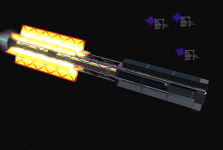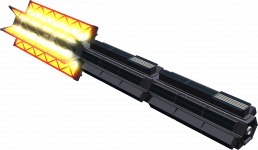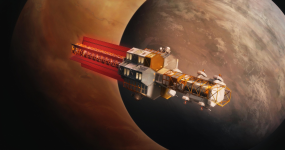I don't think all components will be containerized, but I do think it makes sense for many of the systems to be containerized, especially when the ships they are designed for are also designed with the containerization in mind. This lets the manufacturing centers of the assembly focus on pumping out ships without really caring what they will be used for. Stockpiles of ships can then be quickly configured for whatever task just by putting in the appropriate modules.

The S1 can stack laser modules and engine modules all over the place to make a laser-armed combat ship, but it can just as easily have a battery of telescopes or other 'face toward the thing' tools installed.

And the S2 has a bunch of storage space/connections around the sides that can be used to house equipment like banks of lasers, missiles, sensors, etc.

The S4 is even more modular, with a generic engine module that can have other modules stacked on top. It also has built-in locations for containerized thrusters to use for maneuvering. It is kinda hard to tell but the engine module also has some angled retro-thruster spots.

And then there is the S-10 which might seem like a step back from the S4 in terms of modularity. I think it makes sense to drop the "engine module with attached other module" design and just build the entire ship out of common modules, but also build other variants of the ship using the same parts. You really don't NEED to be able to swap out major sections of a ship like that quickly after all.
The S-10 does still use many of the containerized components though, mostly missile systems, maneuvering thrusters,
life support, and avionics. Some things just work better not-containerized and you can see that the gun turrets and major communications/sensor systems are in their own housings on the exterior of the ship.
Which is to say: This makes designing ships a lot easier/faster both in character and out of character.
--------
There are also some side-benefits that I particularly like. Need to do something complex like shove an asteroid? You can take some of your thruster-containers off the ship and fit them to the asteroid that needs shoving.
You can yank the life support
system and bring it down to whatever colony is in trouble.
Even things like missile launchers and
drones can be packed up and left behind somewhere for defensive operations.
Ships making the FTL trip between
star systems like
Atlantica and Hawking can even leave many of their containers behind at Atlantica to bolster their supplies, then make the trip back to Hawking and restock while they are in the home system. This serves double duty of helping supply Atlantica AND reducing the mass that has to transit back to Hawking.
Come to think of it, S4 starship modules could have been left behind and strung together to make space stations...






